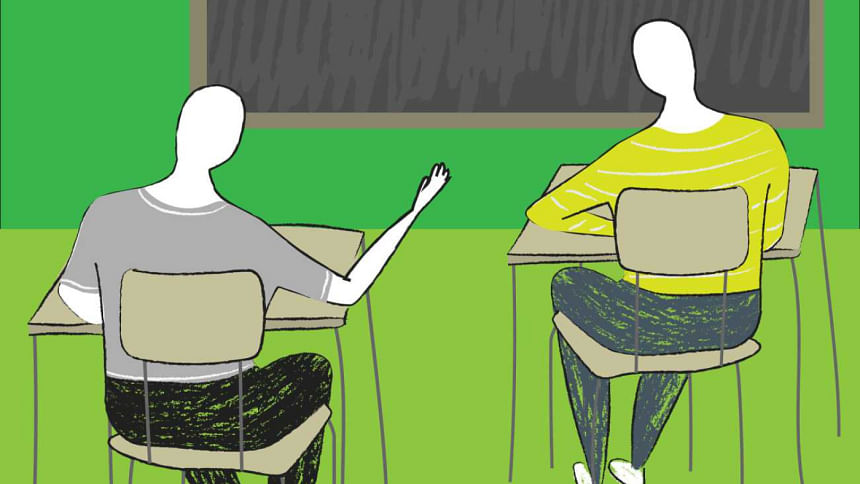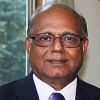The education budget: A 'smoke and mirrors' exercise

Smoke and mirrors" is an idiom based on illusions created by magicians, where they make objects appear or disappear by extending or retracting mirrors amid a distracting burst of smoke. According to the Merriam Webster dictionary, it is something that seems good but is not real or effective and is done especially to take attention away from something else that is embarrassing or unpleasant.
The spin given to the 2017 budget presented by Finance Minister AMA Muhith to the Parliament on June 1 is that education will get an unprecedented boost. An allocation of Tk 50,432 crore for education in the budget for 2017-18 fiscal amounts to 12.6 percent of the total budget size of Tk 4,00,226 crore, announced the Finance Minister.
Of the total allocation for the sector, Tk 23,141 crore has been allocated for the Ministry of Education, Tk 22,022 crore for the Ministry of Primary and Mass Education, and Tk 5,269 crore for the Technical and Madrasah Education Division, which has been shown separately this year.
The media, and the general public, may be buying the spin. The Daily Star editorial, under the heading A Big Budget, commented "We welcome the enhanced allocation in the major areas including education… Allocation for education has gone up by 14 percent… with emphasis on heavy infrastructure investment with the aim to improve capacity and quality. The emphasis on qualitative improvement in teaching methods is noticeable" (June 2, 2017).
But, what is proposed in the budget and what is actually disbursed and spent are not the same. As the following table about education budgets and actual expenditures shows, the real public education expenditure may not live up to the optimistic spin.
It can be seen that the average actual public spending for education was close to 14 percent of the total government budget in the four years from FY2012 to 2015. The revised budget, considering spending possibility for the current year, is almost 1.5 percentage point less than the actual for the past four years as a share of the total government spending. The new proposed budget is proportionately of the same order as the revised budget for the current year, though in absolute amount it has grown, since the new budget is larger than last year's.
The budget speech refers to the education sector in a short paragraph where mention is made of computer labs in some 3,550 institutions and multimedia classrooms (meaning provision of a projector and a laptop computer) in 23,331 secondary and primary classrooms, and construction of buildings and classrooms in 500 colleges, 3,000 schools and 1,000 madrasas. Some 3.8 million students of grade 6 and above will receive stipends. Teachers will have enhanced benefits.
These are necessary and customary items which should figure in the education budget. But, the key questions are whether the allocated funds are actually used and how they are used to improve learning results. Computers and multimedia can be helpful only if there are teachers who can help students to use them, if they are maintained and kept operational, and if there is power supply and working internet connectivity. These remain practical problems in most schools.
Does the new budget break any new ground and provide the resources for a quality leap in the education system? Not likely, since the proportionate increase barely keeps up with the costs and numbers of students – there has been no marked change in per student public spending. This spending is one of the lowest in the world and is reflected in the low GDP share and government budget share – much below the international benchmark of 4 to 6 percent of GDP and 20 percent of the national budget.
Does the budget envision increasing learning time in primary schools which is less than half of the international standard of a thousand hours per year? Is there an assurance of qualified and trained teachers for essential subjects such as math, science and even languages in every secondary school? As long as the budget is planned to provide for some increase within the existing structure and pattern of expenditure, without major reforms, quality changes are unlikely.
New thinking is needed to attract and retain bright young people in school teaching, which is not just a matter of a higher salary. Area-based planning for each upazila and urban areas are needed to ensure sufficient institutions of acceptable quality aiming for universal primary and secondary education as befits an aspiring middle income country.
A good beginning for structural changes would be to have one ministry for school education so that rational plans can be made for quality school education for all children. The present management structure and turf battle between two Ministries have hamstrung even the extending of compulsory education to grade 8.
These are, however, not issues that the Finance Minister and his annual budget can resolve. The ideas and policy shifts have to come from the line education authorities, supported and encouraged by political decision-makers. The lack of capacity or unwillingness to think out-of-the box in this respect keeps the education system and the education budget trapped in a smoke and mirrors show, creating an illusion of change.
The writer is Professor Emeritus at BRAC University.





Comments